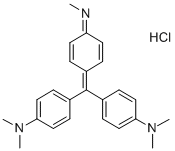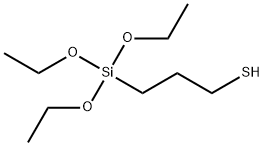PyriproxyfenSolutioninMethanol , 1000 μg/mlinmethanol, uncertainty: 2% , 95737-68-1
Synonym(s):
2-[1-Methyl-2-(4-phenoxyphenoxy)ethoxy]pyridine
CAS NO.:95737-68-1
Empirical Formula: C20H19NO3
Molecular Weight: 321.37
MDL number: MFCD01691614
EINECS: 429-800-1
| Pack Size | Price | Stock | Quantity |
| 1.2ml | RMB159.20 | In Stock |
|
| others | Enquire |
PRODUCT Properties
| Melting point: | 45-47°C |
| Boiling point: | 230-250 °C(Press: 0.2 Torr) |
| Density | 1.32 |
| vapor pressure | 2.9 x l0-4 Pa (20 °C) |
| refractive index | nD20.5 1.5823 |
| storage temp. | 0-6°C |
| solubility | DMF: 30 mg/ml; DMF:PBS(pH7.2) (1:2): 0.33 mg/ml; DMSO: 25 mg/ml; Ethanol: 15 mg/ml |
| form | Solid |
| pka | 3.2 (base, est.) |
| Water Solubility | 0.4 mg l-1 (25 °C) |
| color | White to off-white |
| InChI | InChI=1S/C20H19NO3/c1-16(23-20-9-5-6-14-21-20)15-22-17-10-12-19(13-11-17)24-18-7-3-2-4-8-18/h2-14,16H,15H2,1H3 |
| InChIKey | NHDHVHZZCFYRSB-UHFFFAOYSA-N |
| SMILES | C1(OC(C)COC2=CC=C(OC3=CC=CC=C3)C=C2)=NC=CC=C1 |
| LogP | 4.840 (est) |
| CAS DataBase Reference | 95737-68-1(CAS DataBase Reference) |
| NIST Chemistry Reference | Pyriproxyfen(95737-68-1) |
| EPA Substance Registry System | Pyriproxyfen (95737-68-1) |
Description and Uses
Pyriproxyfen is a pyridine insecticide that mimics juvenile growth hormone, which prevents larvae from developing into reproduction-capable adults. The LD50 of pyriproxyfen in rats is >5,000 mg/kg, >1,300 mg/cubic meter/4 hours, and >2,000 mg/kg through oral, inhalation, or percutaneous dosing, respectively. It is used as a larvicide in the drinking water of 11 municipalities in Brazil and rumors suggested it may be correlated with the increase in cases of microcephaly in Brazil. The acceptable daily intake determined by the World Health Organization is 0.3 mg/L. The prevalence of microcephaly in Brazil is not higher in municipalities that use pyriproxyfen in the water supply, compared with municipalities that use the larvicide Bti. In addition, in zebrafish, even very high doses (0.1 μg/ml, compared with 0.01 μg/ml used in practice for pest control) pyriproxyfen does not induce microcephaly or other brain malformations. Formulations containing pyriproxyfen are used for flea control in dogs and as an insecticide for ants.
Insecticide.
Safety
| Symbol(GHS) |  GHS09 |
| Signal word | Warning |
| Hazard statements | H410 |
| Precautionary statements | P273-P391-P501 |
| Hazard Codes | N |
| Risk Statements | 50/53 |
| Safety Statements | 60-61 |
| RIDADR | UN3077 9/PG 3 |
| WGK Germany | 2 |
| RTECS | UT5804000 |
| HazardClass | 9 |
| PackingGroup | III |
| Hazardous Substances Data | 95737-68-1(Hazardous Substances Data) |
| Toxicity | LD50 oral in rat: > 5gm/kg |




